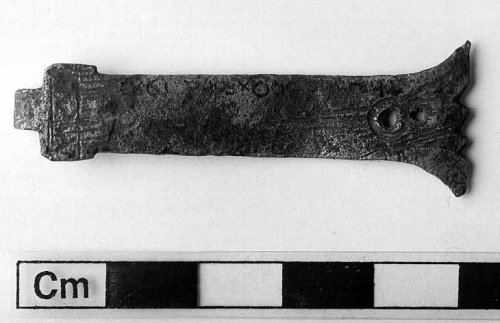|
|
Book-Clasp from the Oxford Greyfriars: 15th century |

Medieval books were extremely valuable as each was produced individually by hand. The parchment from which the pages were cut responded to changes in the atmosphere by swelling and shrinking out of shape; the ink used was made from natural substances and could run or fade; bookshelves holding the books tightly pressed together in an upright position had not yet been invented, and so consequently securing the book tightly with a strap and clasp when not in use was highly desirable.
Oxford, as the centre of a thriving University and home of many monasteries and religious houses in which books were painstakingly reproduced, was an important centre for the production and purchase of books; the industry was centred on the present Radcliffe Square, also the location of the Medieval "schools" or lecture halls.
In the 15th century, Henry V’s scholarly brother Duke Humfrey provided the University with a splendid new library and large collection of texts, primarily in Latin but also in Greek, Greek scholarship making its first appearance in England at this time. It is not impossible that the book secured by this clasp was in Greek.
© 1998 Oxfordshire Museum Service, Setúbal Museums and the Benaki Museum